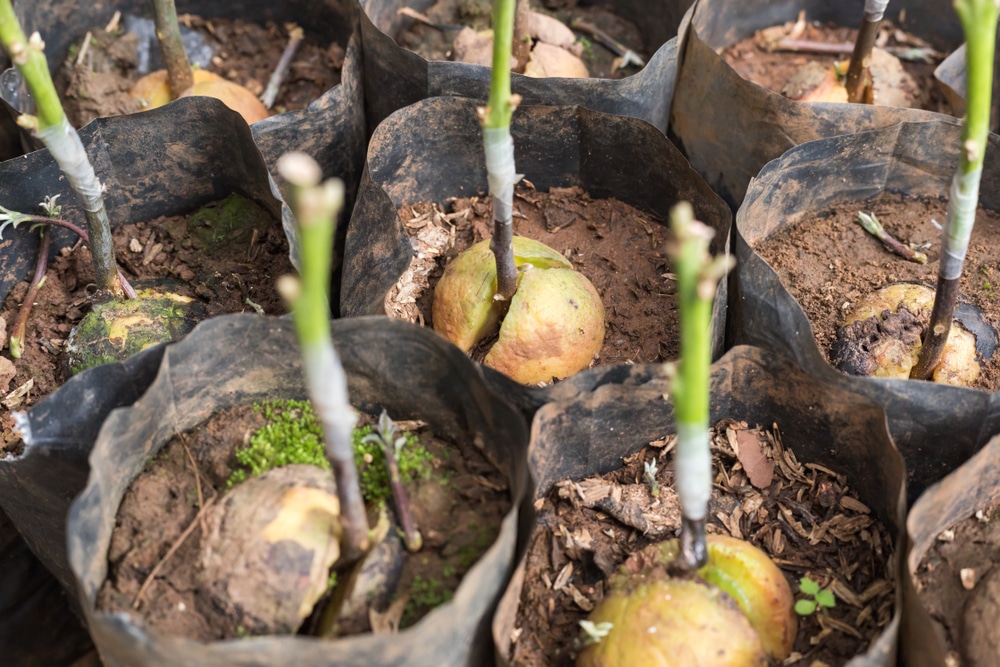Some plants convert more of the toxic particles in their new environment into their own food source. Integrating these kind of house plants is a powerful way to embrace biophilia in your office and home.
These green companions not only purify the air but also provide a sense of tranquility and connection with the natural world. So, let’s invite biophilia into our lives and transform our spaces into biophilic oases.
By reconnecting with nature, we can enhance our well-being and create healthier, more productive, and aesthetically pleasing environments with the best indoor air purifiers plants.
.
1.Gerbera Daisy (Gerbera jamesonii)
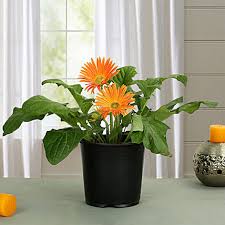
Add cheer to your interior with this colorful daisy known to remove benzene, formaldehyde and trichloroethylene from the air. While growing the plant indoors can be tricky, you can also grow them in your backyard and display the cuttings in a vase.
2.Bromeliad Vriesea Vogue
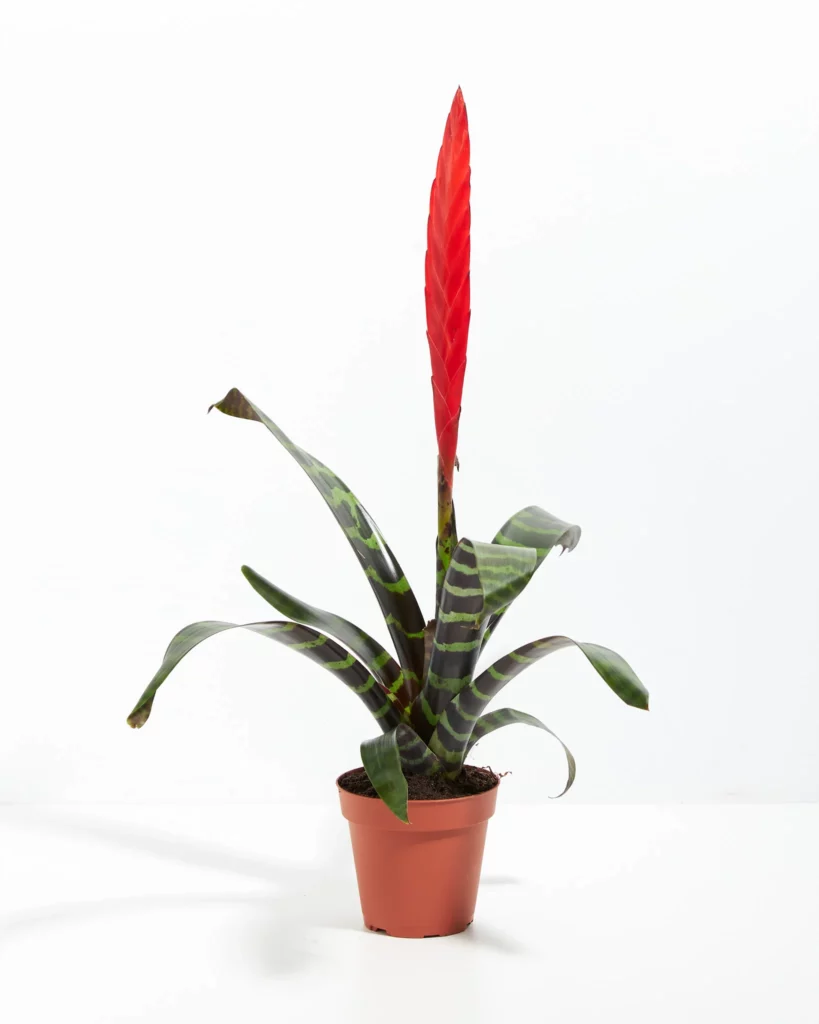
Bromeliads are extremely effective at removing VOCs from the air and can remove up to 80% of chemicals such as acetone and benzene. Volatile Organic Compounds (VOCs) lurk in the air all around us, especially indoors. They are among the best air purifiers indoor plants.
These harmful chemicals and pollutants are often found in carpets, cleaning and cosmetic products, and paints. VOCs have been linked to an increased risk of diseases like cancer. Bromeliads actually perform this process at night rather than during the day, so place a bromeliad on your bedside table and enjoy the benefits of having one of the best indoor air purifiers plants.
Pet owners, this one’s for you because they are not poisonous to animals.
Also known as the Flaming Sword Plant, the dramatic and non-toxic houseplant adds a pop of color to any space with its cone-like red and yellow spikes. It prefers bright sunlight and you’ll need to provide water to the plant’s central reservoir and mist it often.
3.Chinese Evergreen (Aglaonema)

Chinese Evergreens are good air purifying indoor plants removing Benzene and Formaldehyde toxins, so they are ideal for areas with high pollution or low air-circulation. With its ability to tolerate low light and drought, the Chinese evergreen is an easy plant for beginner indoor gardeners. If your plant gets enough sunlight, it might even produce a calla lily-like bloom.
These evergreen perennials are native to tropical forests in Asia.
In addition to looking patterned and colorful, these pretty plants can remove many common toxins. But caring for these plants may require extra attention.
Plant care: Water moderately and allow compost to almost dry out before watering. Chinese evergreens like high humidity, a little regular misting, and getting repotted every few years.
Toxic to animals: Chinese evergreen plants are toxic to dogs.
4.Spider plants (Chlorophytum comosum)
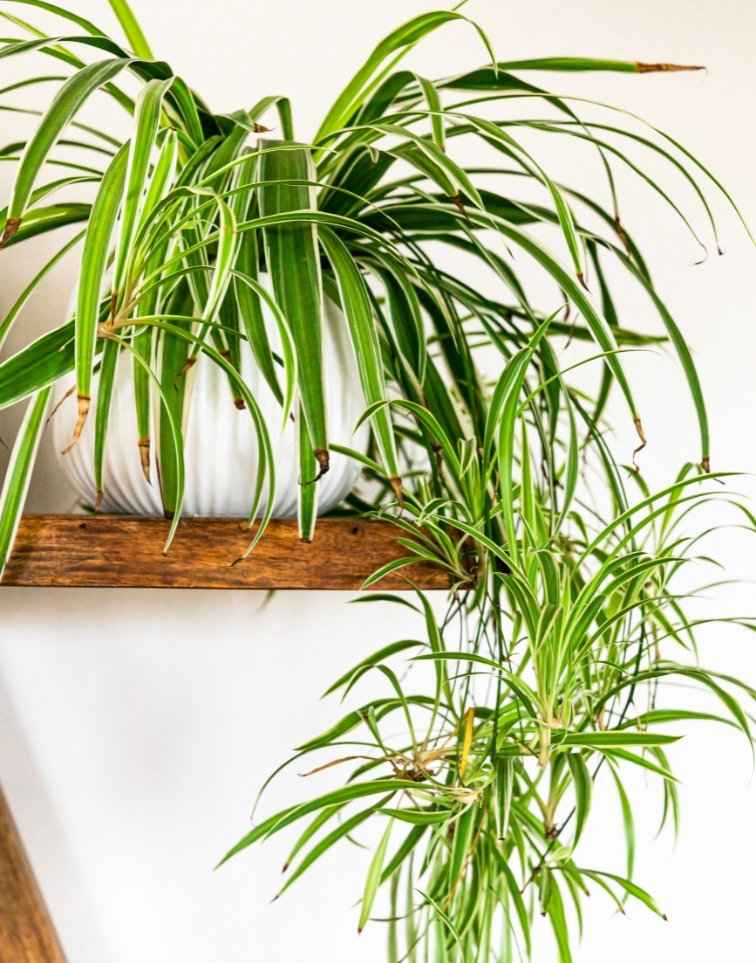
Also known as air plants, spider plants grow quickly and look great in hanging baskets, especially in your work space.
Spider plant benefits are numerous so it’s hard to imagine any home not having one of these striped leaved beauties tucked away somewhere. But more than just an easy-to-grow favorite, these plants are formidable at removing all chemicals found in many synthetic fabrics, paints and glues.
They have also been proved to lower carbon monoxide levels.
Plant up in pots and place on a high shelf or windowsill or display in hanging planters. Unlike many other indoor plants, they are also non-toxic for pets and safe for children.
Plant care: Water your spider plants two to three times a week.
5.Rubber plants (Ficus elastica)
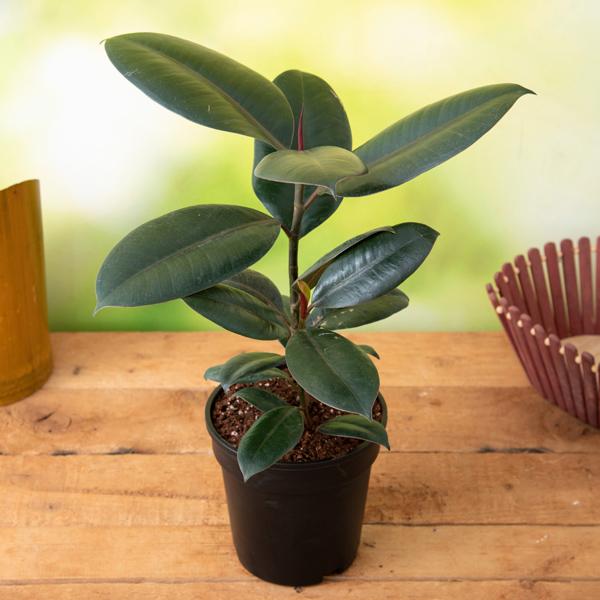
Rubber plants are evergreen trees from India. Their roots grow upwards and often become entwined around the plant’s trunk, forming interesting shapes. These plants love bright, filtered light and a little attention now and then.
Plant care: Water moderately to keep the soil moist, especially in the winter. Prune the leaves and wipe them down to keep them looking pretty.
Toxic to animals: Rubber plants are toxic to cats and dogs.
Eliminates: carbon monoxide, formaldehyde, trichloroethylene and more
6.Bird’s Nest Fern (Asplenium nidus)
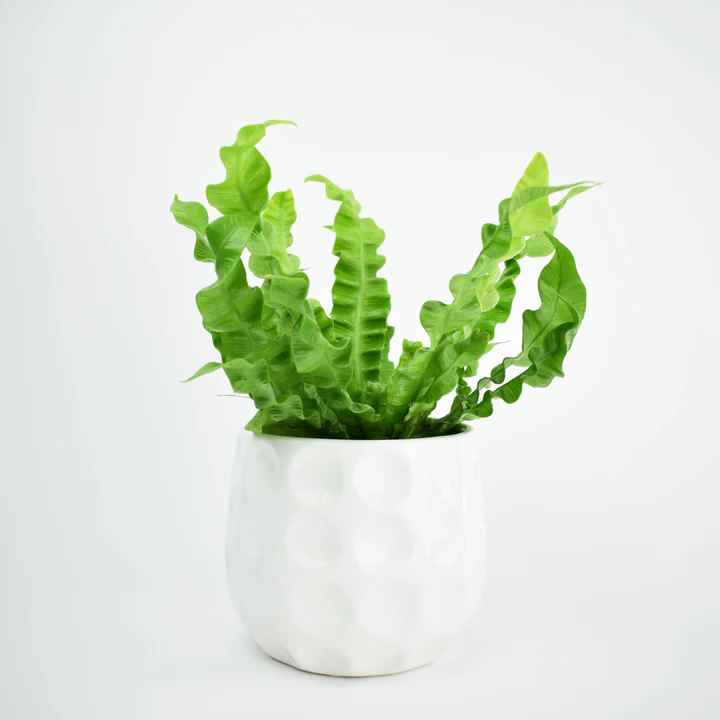
A true stylish beauty, these crinkly leaved ferns are great air cleaning indoor plants, purifying the air of formaldehyde, often found in new flooring and wall coverings. With glossy lime green fronds growing in rosettes, they make a striking statement on a shelf or bathroom windowsill as a bathroom plant, but will need up to 60cm to splay out as they mature.
Birds nest fern is an underrated house plant as it has strong air purification qualities and can help treat asthma & halitosis.
7.Money Plant /devil’s ivy – (Pilea Peperomioides)
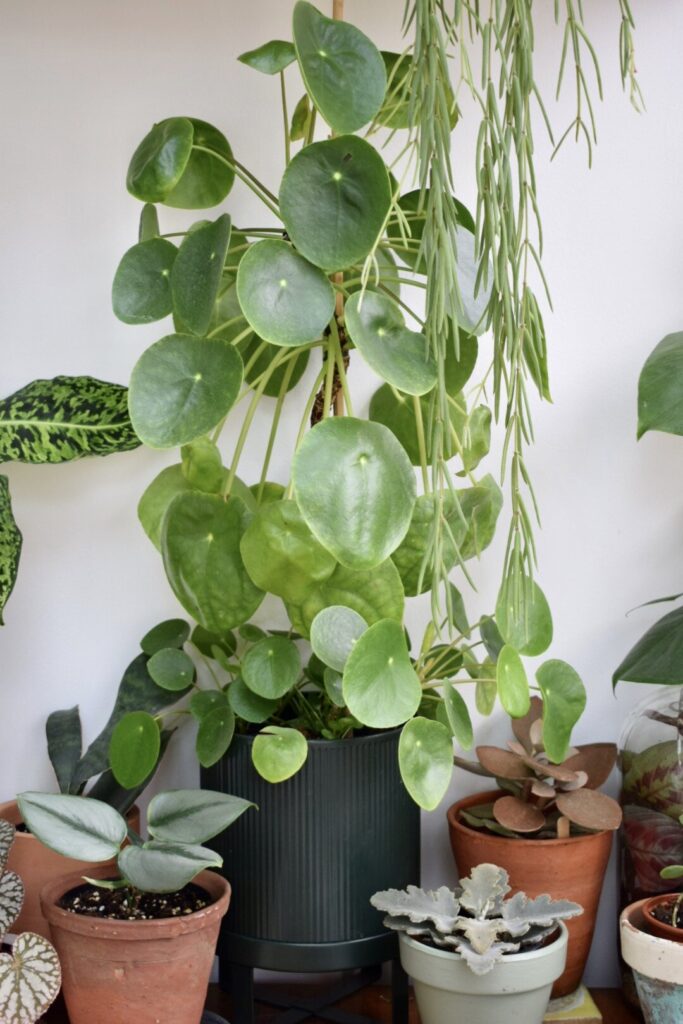
With its flat, green circular leaves that can grow as big as 15cm across, the Chinese money plant is instantly recognizable. One of the most effective indoor plants for air purification they are particularly effective at reducing levels of harmful chemicals found in carpets, paints, glues and manmade fabrics.
A member of the stinging nettle family, this unusual plant can grow up to 16 inches (40 cm) high and loves a light spot, away from strong sunlight. Water when the soil is dry to the touch and feed monthly with a liquid feed during spring and summer.
8.Chrysanthemums (Chrysanthemum × morifolium)
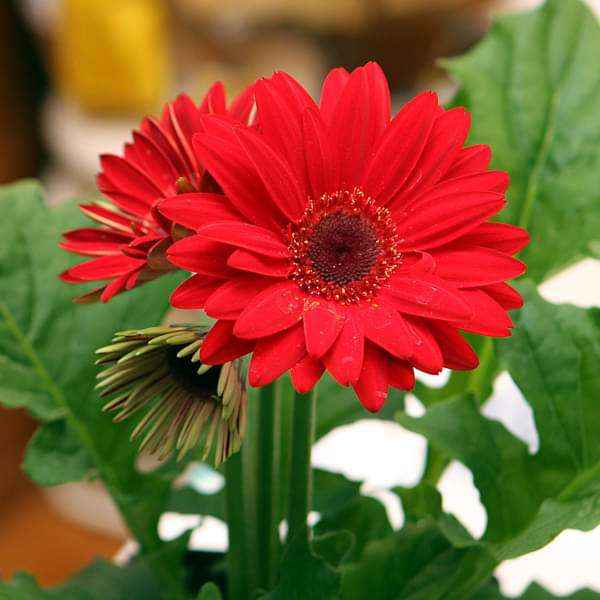
Although one of the most difficult to grow, Chrysanthemums are a great flower option to add a bit of color to your office or home.
Chrysanthemums are the most effective plant at cleansing the air. Eliminating common VOCs such as formaldehyde, xylene and benzene. It can also absorb ammonia which is present in many household cleaners and floor sealers. Unusually it’s the flowers that extract the chemicals from the air, so you may need to replace regularly or rotate a few plants while old blooms fade, and new buds emerge.
Care: To ensure their optimal growth, it’s important to keep the soil consistently moist, making regular watering a crucial practice for these plants.
9.Lady palm (Rhapis excelsa)
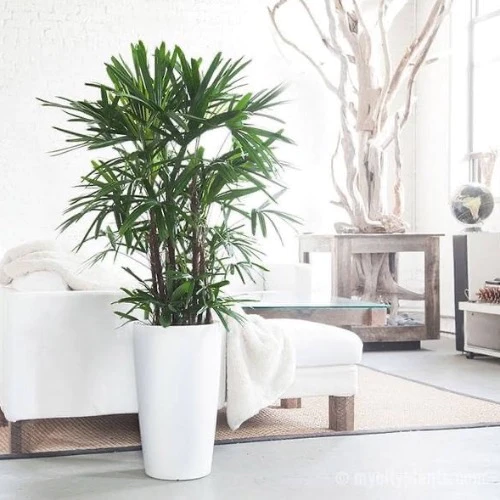
The lady palm (also commonly known as the bamboo palm) grows in an attractive, even pattern, and new leaf stalks sprout from its bottom. This is one of the best plants for bedroom placement because they grow best in bright, indirect light near a window or skylight. Each leaf stalk can grow up to 18 inches long, so the green leaves will grace an empty bedroom corner easily. The lady palm is very tolerant to low light conditions, and this plant does not require too much water.
10 .Peace lily (Spathiphyllum)
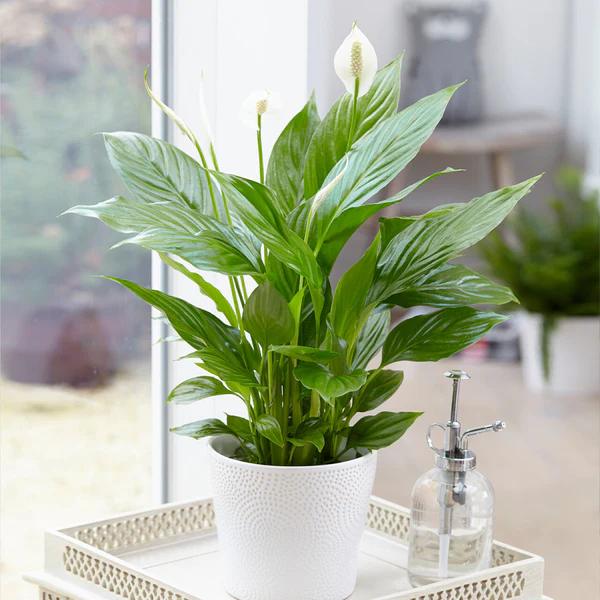
Peace lily is one of the best plants when it came to purifying the air because of its ability to break down and neutralize toxic gases.
They are the most effective houseplant for removing TCE from indoor air pollution, removing 23% over 24 hours.
Being one of the most popular indoor plants and require minimal maintenance, it prefers underwatering to overwatering. They thrive in bright, indirect light, damp soil and warm temperatures and only needs to be watered weekly.
Peace lilies are one of the most attractive bedroom plants.
You can prop them up on your windowsill, and they’re able to filter out many harmful toxins. The moisture given off by these houseplants boosts the humidity in the room and suppresses airborne microbes.
Conclusion
Choose a plant that fits you, some plants will need specific needs for them to thrive and purify the air. If you are kind of busy choose low maintenance plants.
Its advisable that you keep atleast two interior air purifying plants per 100 sq. feet’s.
Shop today and benefit from these amazing air purifying plants.
